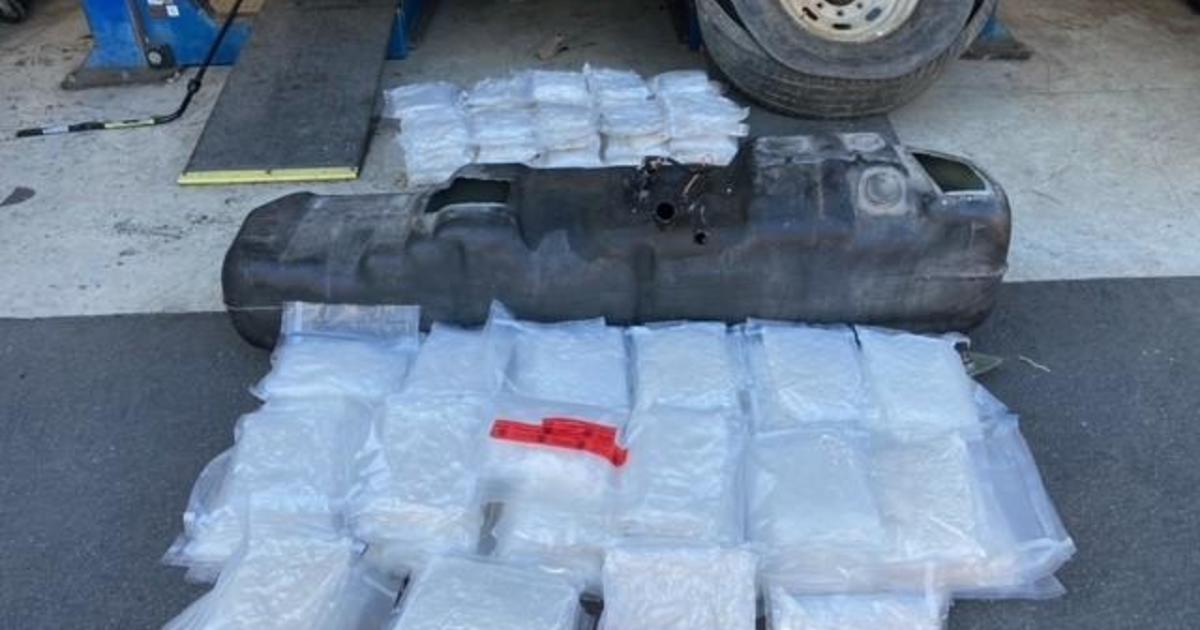Epicurious Editor-In-Chief Tanya Steel On How To Avoid Turkey Disasters
(CBSLA.com) — If you want to take your turkey to a whole new level this Thanksgiving, Tanya Steel has some tips for you.
Steel, the Editor-in-Chief of Epicurious and "The Epicurious Cookbook", stopped by KCAL9 on Thursday with some advice on how to avoid Thanksgiving disasters.
Some common mistakes Steel says to avoid:
1. You Forgot to Defrost the Turkey
Defrosting the turkey in the refrigerator is safe and practically effortless, but it's also a super-slow process; you need to allow about 24 hours for every 4 to 5 pounds, so a 13- to 16-pound turkey takes three days. If you're short on time, a water bath is your best bet. It's more labor-intensive but fast, cutting the defrosting time down to 6 to 8 hours for a 13- to 16-pound bird. Make sure the turkey's wrapper is watertight, with no holes or tears, then place the bird in a large sink or basin filled with cold (below 40°F) water. As the bird thaws, drain and replace the water every 30 minutes, making sure the water temperature stays below 40°F. If you live in a chilly climate, set the water bath outside to help keep it cold. Once the turkey is defrosted, thoroughly scrub the sink or basin to remove any bacteria.
• Display frozen turkey
• Demo defrosting in water bath
2. Your Stuffing or Dressing Is Dry
If you stuff your turkey, dryness is unlikely to be a problem, as the bird's juices naturally moisten the bread or rice. But if you prefer to bake this savory dish; whether you call it stuffing or dressing; casserole-style, it may suffer from a lack of moisture. The solution is easy: Before the dressing goes in the oven, drizzle it with a rich, delicious turkey stock (about 1Ž4 to 1Ž2 cup for 8 to 10 servings). To amp up the flavor, finely mince and sauté the giblets and add them to the stock. And if your dressing is vegetarian, use vegetable broth or, even better, a rich mushroom stock instead.
• Display dry dressing
• Drizzle with stock
• Display small dish of celery and carrots (to show amping up of flavor)
3. Your Stuffing Is Undercooked
When you check the internal temperature of the turkey, you should also check the temperature of the stuffing; both need to reach 165°F. But what happens when the turkey is cooked and the stuffing is not? Rather than over cooking your bird, spoon the stuffing into a dish and microwave it until it reaches 165°F. If you don't have a microwave, scoop the stuffing into an oven-safe dish and continue to roast it while the turkey rests.
• Display undercooked stuffing
• Use thermometer to demonstrate appropriate temperatures
4. The Gravy Is Lumpy
It's more than just a Thanksgiving joke; lumpy gravy happens, and it's not a pretty sight. The problem usually arises from whisking the turkey juices into the roux or other thickener too quickly, so preventing lumps is really just a matter of timing, and you will get better with practice. If you do end up with lumps, simply strain them out with a fine-mesh strainer. Gravy that is too thick or too thin is also a problem. Overly thick gravy can be thinned with water, or, to avoid diluting its flavor, stock. Thin gravy can be gently boiled down to reduce and thicken it. Or, simply add more of your chosen thickener, whether it's a flour-based roux or a cornstarch and water slurry. (To make a slurry, combine equal parts cold water and cornstarch, whisk them slowly into your gravy, and bring the mixture to a boil to thicken.)
• Bring out lumpy gravy, show straining.
• Bring out thin gravy, stir in cornstarch.
• Bring out perfect gravy, speak on perfect texture.
For more information, visit Epicurious.com.



